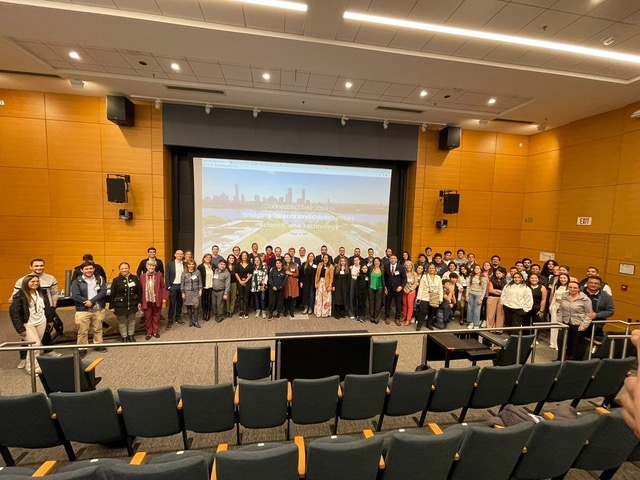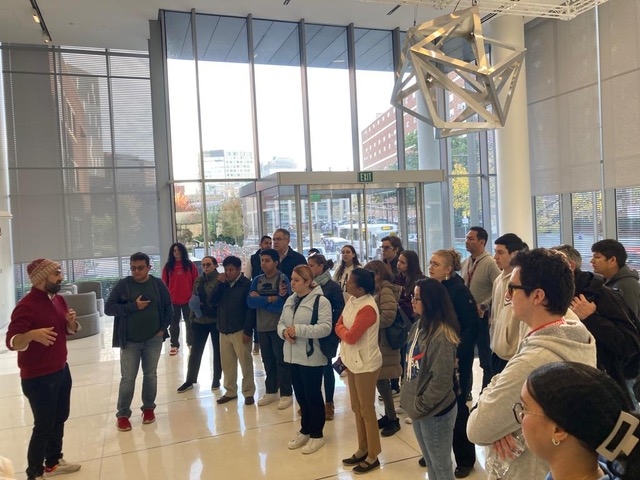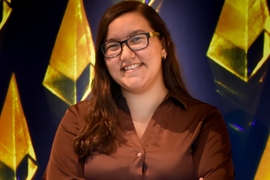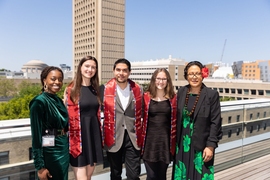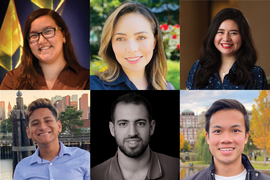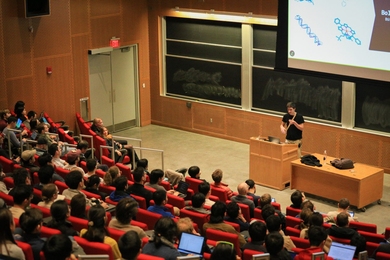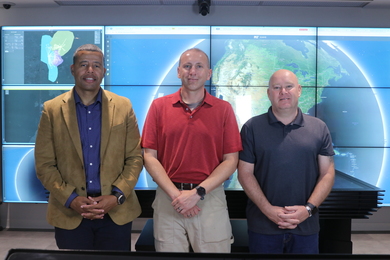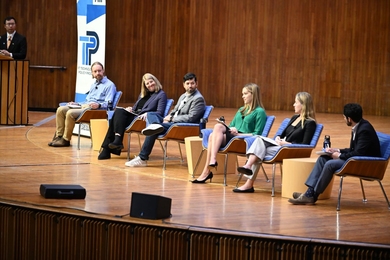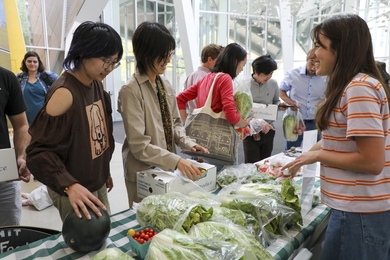On Oct. 13 and 14 at the Wong Auditorium at MIT, an event called Bridging Talents and Opportunities took place. It was part of an initiative led by MIT Latinx professors and students aimed at providing talented Latinx high school students from the greater Boston area and various Latin American countries a unique chance to explore the world of science and innovation within MIT's campus.
The primary goal of the effort is to inspire and empower talented, low-income high school scholars, particularly those from first-generation and low-income backgrounds. These students are driven by the inspiring life stories of Latinx scientists who have overcome similar circumstances to make remarkable contributions to the field and who are now affiliated with some of the world's top universities.
The two-day gathering commenced with a roster of esteemed speakers who were scientists, academics, philanthropists, and trailblazing entrepreneurs, most of Hispanic and Latin American origin. They shared stories of success and their affiliation with prestigious institutions globally, and underscored the achievements and the heights to which one can rise with determination and support.
As part of the event, students, parents, and teachers had the opportunity to visit some science labs at MIT such the Laboratory for Nuclear Science (LNS)’s Laboratory of Exotics Molecules and Atoms, Laboratory for Atomic and Quantum Physics, and the Robotic Lab. With the support of the Harvard Colombian Student Society the group was also able to take a tour to the Harvard University campus.
Diana Grass, an organizer of Bridging Talents and Opportunities, is a second-year PhD student in medical engineering and medical physics in the Harvard-MIT Health Sciences and Technology program. She also serves as the co-founder and co-president of the Graduate First Generation Low-Income student group at MIT (GFLI@MIT).
"In countries like Colombia, it takes an astounding 11 generations, according to the OECD [Organization for Economic Co-operation and Development], to escape poverty," Grass emphasized. "Education is the most powerful tool to break this chain. As a first-generation student and a Latina, I have firsthand experience of the socioeconomic obstacles that hinder educational pursuits and degree attainment. Bold actions are needed if we are to address diversity, the gender gap, and equity within the realm of science. It's immensely gratifying that we can drive these actions forward from top universities like MIT.”
Grass added, “Latino students — especially women — have historically been underrepresented in STEM careers, underscoring the urgency of instilling early motivation in the educational journey. Creating opportunities for first-generation low-income students is an essential step in this direction. This initiative recognizes that addressing educational disparities requires proactive measures.”
The event also hosted Jeison Aristizabal, recognized as the 2016 CNN Hero of the Year and the founder of the first Latin American University for people with disabilities. Overcoming his own cerebral palsy, Aristizabal is now a social communicator and lawyer, redefining the concept of disability and serving as an inspiration to countless students with disabilities. Grass states, “His journey highlights the extraordinary achievements that can be realized through perseverance and determination.”
Edwin Pedrozo-Peñafiel, another event organizer, is a research scientist in the Research Laboratory of Electronics and MIT-Harvard Center for Ultracold Atoms. He stated that “Seeing such a dynamic group of accomplished individuals from similar cultural backgrounds made a compelling statement. It's essential that the younger generations see successful figures they can identify with. Representation in any field, but particularly in STEAM [science, technology, engineering, arts, and mathematics], is not just about checking a box. It's a potent source of inspiration. When young students can look up and see someone who looks like them, speaks like them, and shares a similar cultural narrative achieving greatness, it tells them one vital thing: ‘I can do it, too.’”
He continued, “Beyond individual success stories, the event spotlighted the importance of collective effort. By connecting diverse stakeholders around the shared goal of education, we can amplify the message of the value and transformative power of STEAM careers. Students should recognize that these fields aren't just viable career paths; they're avenues to impact their families, communities, and even the world positively.”
Boleslaw Wyslouch, professor of physics and director of the Laboratory for Nuclear Science and the Bates Research and Engineering Center, provided introductory comments in a welcome at the beginning of the Friday session. He said, “I was delighted that MIT and the Laboratory for Nuclear Science were able to help welcome Latino students from the Boston area, from around the country, and from abroad to the workshop. The combination of inspirational speakers, practical information, and visits to world-class MIT laboratories organized by Professor Ronald Garcia Ruiz was an excellent way to showcase the opportunities in science and engineering. I am very grateful to many outside organizations for sponsoring the students and their families to attend the event.”
Professor Garcia Ruiz, who is a researcher in LNS and one of the organizers, emphasized, “Disadvantaged youths, especially those from underserved communities, are disproportionately affected by the world's major challenges, including climate change, inequality, water scarcity, and food security, to name a few. However, these firsthand experiences also provide them with a unique perspective and motivation. When equipped with the right resources and education, these individuals do not merely thrive — they lead.
“By creating bonds between these talented young individuals, their families, committed educational foundations, global leaders from various fields, and visionary entrepreneurs and institutions, the event aimed to secure opportunities to empower them to become the innovators and transformative leaders of tomorrow. However, a stark reality persists. Often, even in the face of available opportunities, many of these young individuals do not take them — either due to lack of awareness, the pressure of their communities, or fear of venturing into the unknown. We are hopeful that our initiative will help bridge this gap.
“The wave of support from LNS, the MIT community, and from outside has been deeply heartening. The gratitude expressed by participants, especially by the students and their families, serves as our strongest motivation to continue with this mission.”
